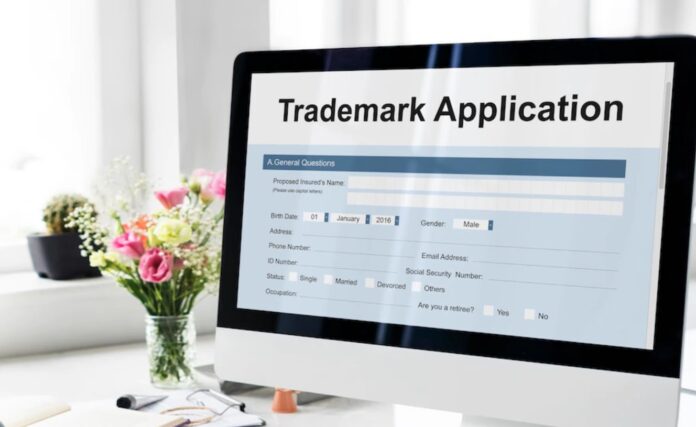A trademark is a symbol, word, design, or even a catchphrase that can be used to identify a particular product or service from a particular brand.
These identifying elements can be used to distinguish it from others.
Filing for a trademark is a crucial step for businesses, as it protects the owner’s brand while preventing others from using it without permission.
Filing for a trademark can be a complex process, and many business owners often need assistance with the process.
If you have questions on how to file a trademark successfully, you can always check this page to learn more about filing a trademark from qualified trademark attorneys.
It is important to note that filing for a trademark is not a one-time process. You will need to renew your trademark every ten years to ensure it remains in effect.
Additionally, you will need to monitor your trademark to ensure it is not being used by anyone else without your permission.
Here are 4 more tips you need to know when filing for a trademark.
1. Determine whether you are eligible to file for a trademark

Eligibility is an important criterion to consider when looking to file for a trademark or have a trademark registered.
To be able to file for a trademark, you must prove that the chosen mark is yours and does not infringe on another business’ mark rights.
Also, if your business is still mostly an idea, it can be difficult to establish that your chosen trademark qualifies to be registered.
However, this is not impossible. To be eligible to file for a trademark, you must either be using your trademark in commerce or intend to use it in commerce in the near future.
If you file for a trademark based on ‘intent to use’, you will receive a Notice of Allowance, which allows you to use the trademark after all other requirements have been fulfilled.
But, this Notice of Allowance is only temporary as your chosen trademark will not be officially registered until you file a Statement of Use.
After being issued a Notice of Allowance, you will have a grace period of six months to file a Statement of Use, showing that the chosen trademark is now in use on your product or service for it to be officially registered.
2. Choose the right trademark

Trademarking is overseen by the United States Patent and Trademark Office (USPTO). They regulate trademark usage in the United States alone.
If you hope to expand your business internationally, you may want to file an international application for your trademark.
But in the United States, it is important to choose a strong and distinctive trademark that is not already in use by another party.
You can start by searching the USPTO’s Trademark Electronic Search System (TESS) to see if your proposed trademark is available.
Determine the correct trademark classification

There are different classes of goods and services that are used to classify trademarks. You will need to determine the correct classification for your goods or services to properly file your trademark application.
After you have done this, you can proceed to choose a trademark based on what class you think is most suitable for your business or brand.
This is necessary because one of the requirements of your application is a detailed description of the goods and services your business offers.
Also, determine if you want to get standard character trademarks, which protect the word or phrase itself, or stylized or design trademarks, which protect the design or logo.
Conduct a trademark search

Before filing for a trademark, it is essential to search to ensure that the trademark you want to use is not already in use by someone else.
You can conduct a search on the US Patent and Trademark Office (USPTO) website or online database or even hire a professional trademark search service.
It might also prove beneficial to conduct a social media or domain search for your chosen trademark elements to see if it is already in use. This is necessary, especially if you want to market or promote your business online.
You can also search business directories. This search eliminates the chances that a third party will file an objection to your trademark application or prove to be a waste of the resources used in obtaining and getting a trademark registered.
3. File a trademark application

You can file a trademark application with the USPTO.
You will need to ensure that your application is free of technical errors, such as submitting an unclear picture of your chosen mark in the case of designs and logos.
You will need to provide information about your trademark, such as its name, class, and intended use. You will also need to pay a fee to file your application.
This fee can also vary depending on the type of trademark you are registering.
4. Wait for a response from the USPTO

After you file your trademark application, it will be reviewed by an examining attorney to ensure that it meets all the requirements.
If the application is approved, it will be published in the USPTO’s Official Gazette, which allows other parties to object to the registration of your trademark.
If you receive an office action from the USPTO, you will need to address any issues or concerns raised by the examining attorney.
If someone opposes the registration of your trademark, you may need to respond to their opposition or participate in a hearing to resolve the issue.
Your response must address all issues raised to avoid receiving a final office action.
Considering the complexity of the issues that an office action can raise, you may want to get a trademark lawyer to review your response.
Bottom line
Once your trademark is registered, you must use it in commerce to maintain your rights.
This means using it on your goods or services and in any advertising or promotional materials.
Getting your trademark registered can take anything from a few months to years.
The time it takes is largely dependent on the action steps you take to file your trademark application correctly.








